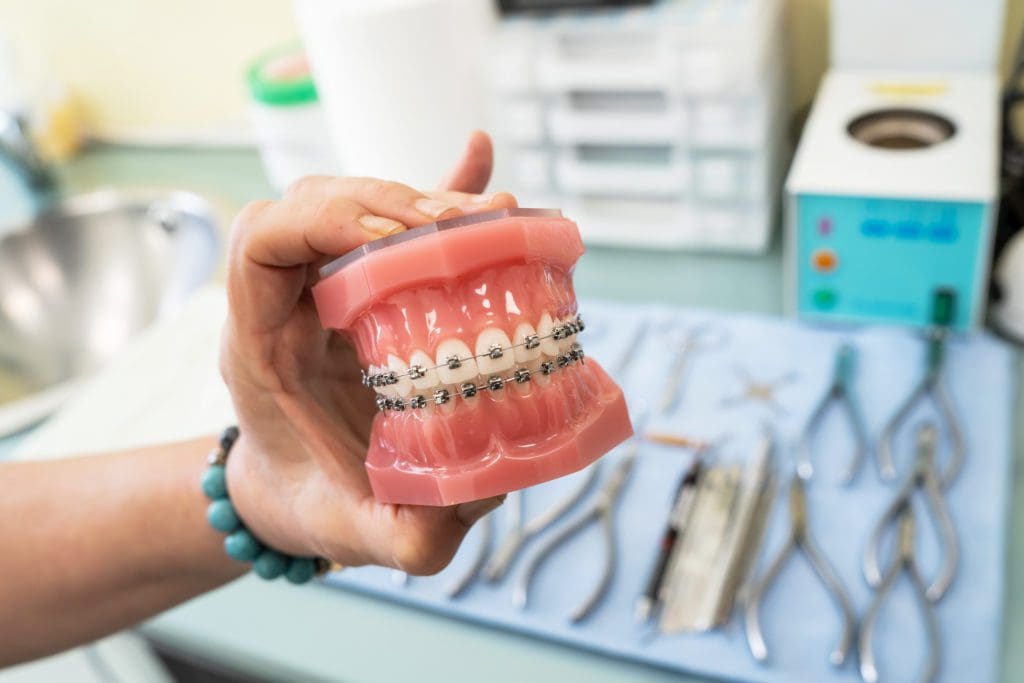Your Overview to Cumming Invisalign: Straightening Teeth with Style and Comfort
Your Overview to Cumming Invisalign: Straightening Teeth with Style and Comfort
Blog Article
Comprehensive Guide to Orthodontics Procedures for Dealing With Dental Imbalances
In the realm of orthodontics, the journey to attaining a perfectly straightened smile includes a myriad of treatments tailored to deal with dental misalignments. From conventional dental braces to undetectable aligners and even surgical choices, the field of orthodontics uses a variety of solutions to deal with differing degrees of oral abnormalities. Comprehending the ins and outs of each treatment, including their mechanisms, benefits, and possible drawbacks, is critical in making informed decisions concerning one's orthodontic treatment. As we browse through the detailed guide to orthodontic procedures for dealing with oral misalignments, the elaborate details of each method will certainly unravel, dropping light on the course toward a unified and functional dental positioning.
Orthodontic Procedures Overview

Regular adjustments and monitoring are essential parts of orthodontic treatment to ensure progress is on track and to make any required modifications along the method. By going through orthodontic procedures, clients can not just accomplish a straighter smile however also improve their general dental health and wellness and function.
Typical Dental Braces: Just How They Function
When considering orthodontic therapies for dental misalignments, conventional dental braces stand apart as a reliable technique for remedying teeth positioning. Conventional dental braces consist of braces, wires, and bands that interact to apply continual pressure on the teeth, gradually moving them right into the preferred positioning. The brackets are connected to the teeth making use of an unique adhesive, and the cords are threaded via the brackets. By adjusting the stress of the wires, orthodontists can control the direction and force related to each tooth, assisting them right into correct alignment over time.
One trick aspect of how typical dental braces job is the procedure of bone makeover. As pressure is put on the teeth through the braces, the bone surrounding the teeth is reshaped to sustain the brand-new tooth placements. This makeover is vital for the lasting security of the fixed alignment. Clients will certainly need regular modifications at the orthodontist's workplace to make sure the dental braces remain to apply the correct stress for efficient teeth motion.
Unnoticeable Aligners: Disadvantages and pros
These clear, custom-made trays are virtually invisible when worn, making them an appealing option for people seeking a more aesthetically pleasing orthodontic therapy. People can eliminate the aligners before consuming or brushing their teeth, minimizing the danger of food getting stuck in the home appliance and streamlining the cleansing procedure.

Surgical Orthodontic Options
Surgical interventions in orthodontics present sensible options for attending to complicated oral imbalances that might not be efficiently settled via standard orthodontic therapies. While unseen aligners and traditional dental braces can correct lots of orthodontic concerns, particular situations need medical intervention to achieve optimum outcomes. Surgical orthodontic options are commonly recommended for serious malocclusions, considerable jaw discrepancies, and instances where the underlying bone framework needs alteration to attain proper positioning.
One common medical orthodontic procedure is orthognathic surgery, which involves repositioning the jaws to deal with practical issues such as difficulty chewing or speaking. This surgery is commonly done in partnership with an orthodontist that assists align the teeth prior to and after the treatment. Surgical orthodontics may also involve procedures to expose affected teeth, get rid of excess periodontal tissue, or reshape the jawbone to produce an extra harmonious face profile.
Prior to thinking about surgical orthodontic options, clients go through a comprehensive analysis to figure out the requirement and prospective advantages of such treatments. aligners. While surgical treatment might click here for more appear complicated, it can considerably boost both the function and looks of the smile in situations where traditional orthodontic treatments fall short
Retainers and Post-Treatment Treatment

Post-treatment care involves following the orthodontist's guidelines diligently. This might consist of proper oral health practices, attending follow-up consultations, and wearing the retainers as suggested. Failing to abide with post-treatment treatment directions can result in regression, where the teeth progressively relocate back in the direction of their original settings. Consistent retainer wear, excellent oral health, and normal dental examinations are necessary for keeping the outcomes attained through orthodontic surgery and making certain the long-lasting stability of the corrected dental positioning.
Final Thought
In conclusion, orthodontic treatments supply various alternatives for correcting dental misalignments. Surgical orthodontic alternatives are readily available for a lot more severe imbalances. On the whole, orthodontic treatments can efficiently enhance dental wellness and aesthetic look.
As we browse via the thorough overview to orthodontic procedures for fixing oral misalignments, the intricate information of each approach will certainly unravel, losing light on the path towards a harmonious and functional dental alignment. - cumming invisalign
One of the most common orthodontic treatments is the usage of braces, which consist of metal brackets and cables that use mild pressure to progressively change teeth right into the desired placement.When considering orthodontic therapies for oral imbalances, typical braces stand out as a tried and true method for dealing with teeth positioning. Furthermore, invisible aligners might not be ideal for complicated orthodontic issues that need even more substantial teeth movement, as they are generally suggested for light to modest cases. Retainers are customized orthodontic site here gadgets developed to hold teeth in their dealt with placements after the completion of orthodontic treatment.
Report this page